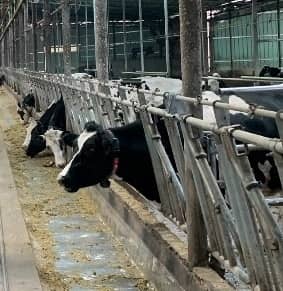The South Korean Ministry of Agriculture, Food, and Rural Affairs looks into establishing a new method of setting milk prices to reflect the falling market demand. This initiative is fiercely opposed by the Korean dairy farmers, who demand that the current production cost-tied system remains in place.
The Korean government introduced the current production cost-tied system called the "Raw milk price linkage system" in August 2013. Before the sector adopted this system, the Korean government and dairy farmers carried tough negotiations every 2 or 3 years to set an official price of raw milk. However, after the government accepted this cost-tied system proposed by dairy farmers, the price was annually selected based on farmers' production costs and the yearly national inflation. This system faced criticism that it didn't reflect the law of supply and demand; that is, the price can stay high despite the over-production of milk and increasing milk powder stocks. Experts predicted that this would weaken the price competitiveness of local dairy products. As milk production kept increasing despite low milk consumption, the Korean government introduced a quota system to decrease milk production, but this did not offer a fundamental solution. The raw milk price increased 72.2% between 2001 and 2020. Korea's raw milk price was one of the highest globally and became even higher due to this pricing system.
As a result, the supplier-friendly status quo came at the expense of consumers, many of whom have turned to cheaper imported milk. Korea's self-sufficiency ratio of raw milk fell to 48.1 percent in 2020, down from 77.3 percent in 2001. The number of dairy farms slumped to 4,929 farms, down 61.1 percent from 12,827 farms over the same period. The number of livestock decreased to 410,000 heads, down 25.2 percent from 548,000.
In the meantime, the import volume of dairy products into South Korea increased more than twice. The Netherlands is the 2nd largest exporter of dairy products into South Korea after the US. Dutch exports have concentrated on B2B products used as raw materials for Korean processed food makers, such as milk powder and milk fat products. Korean demand for foreign dairy products has recently expanded to consumer dairy products such as cheese, butter, UHT milk, and flavored milk.
The South Korean Ministry of Agriculture, Food, and Rural Affairs plans to discard the cost-tied system and categorize raw milk into two options ― one for plain milk and the other as a raw material for processed products. The per-liter raw milk price for plain milk should be kept at KRW 1,100 (EUR 0.81), which is the same price as now, whereas the figure for makers of processed milk products should be lowered to KRW 800 (EUR 0.59). The ministry will cut the supply price further to KRW 600 for processed product makers after shouldering KRW 200 in the form of state subsidies to reduce the burden of raw material costs and bolster locally produced raw milk.
However, farmers say the plan is irresponsible because the price cut does not guarantee an increase in raw milk demand by more processed product makers. The fundamental solution is to tackle increasing costs due to soaring feed prices and environmental restrictions.
Data from the ministry shows per-capita milk consumption fell to 31.8 kilograms in 2020, down 12.9 percent from 36.5 kilograms in 2001, whereas the figure for processed dairy products including cheese, butter, and ice cream rose to 83.9 kilograms, up 31.3 percent from 63.9 kilograms.
The government, farmers, and researchers need to work together to find solutions for challenges in the sector. The current pricing system is not in line with an economic principle. Looking at lessons learned, the industry needs to decrease milk prices through innovation for efficiency, scale improvement, and modernization of farm facilities. At the same time, the government and researchers' role is to help dairy farmers decrease feed prices and environmental costs. They can benefit from paying attention to feed logistics and manure treatment technologies. The Netherlands has the know-how in this field, and together with Korean partners can contribute to this development.

Beeld: © SEO-LNV
Source
MAFRA(Ministry of Agriculture, Food and Rural Affairs), The Korea Times, and Korea Dairy & Beef Farmers Association
DISCLAIMER
The above news article is provided for informational purposes only. The content may include subjective parts and doesn't necessarily represent our own opinion. The Embassy, therefore, is not accountable for the objectiveness or accuracy of the content.